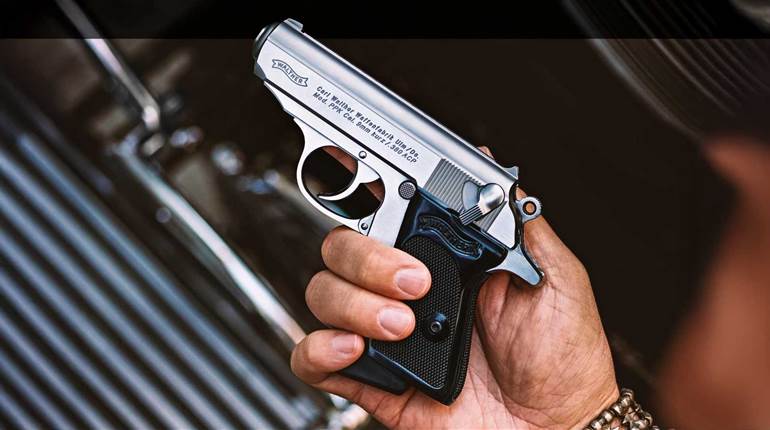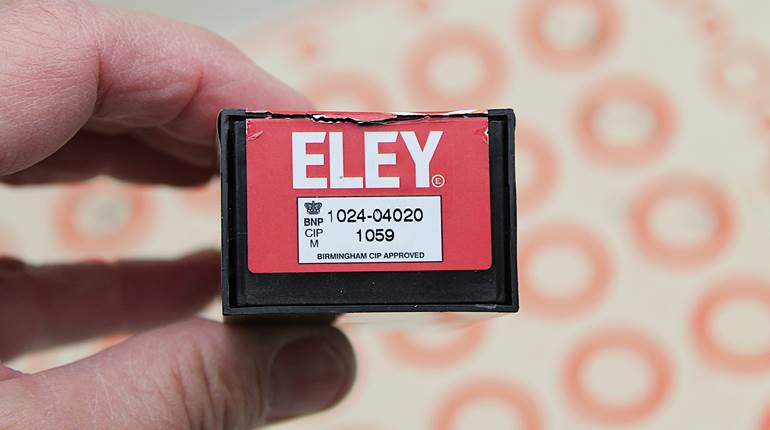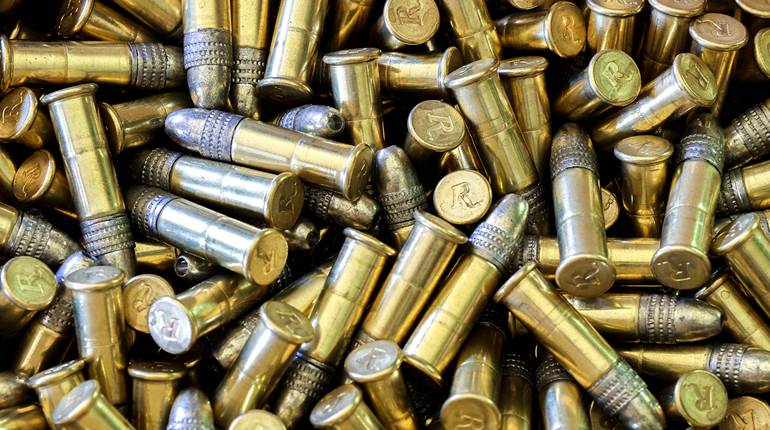
The history of service or military arms chambered in sub-caliber ammunition is indeed a storied one, and the Colt M1911 is certainly no exception. Sub-caliber ammunition—.22 Long Rifle most commonly—offers reduced training costs, operational familiarity with the firearm and helps new shooters master the fundamentals of marksmanship.
While the price for an original Colt Service Model Ace may be too steep for many, Colt is licensing new-production Government Model pistols chambered in .22 Long Rifle. These blowback-operated, single-action, semi-automatics are manufactured by Carl Walther in Germany and imported by Umarex USA. They offer all the familiar weight and handling of the classic M1911, using components made of zinc-alloy, aluminum and steel.
The new Colt Government Model features an even matte-black finish and black rubber stocks. A steel block is pinned into the aluminum slide’s rear and contains not only the firing pin, but the breech and the hook extractor. Stressed parts, such as the breech and barrel, are steel, as are the extractor and fixed ejector. The slide has traditional blackened iron sights, which are dovetailed in place and include set screws for each. By loosening the screws, both the front and rear sights can be adjusted for windage. Slide markings include “Colt’s Government Model Cal. .22 Long Rifle” and the rampant Colt logo on the left and “Colt Government Model” on the right in white. The vertical rear slide serrations are sharp and close together, again following the traditional pattern.
The frame is of cast zinc-alloy and gives the gun a heft that approximates that of its center-fire cousins. Controls include a fully functional slide lock/slide release, a left-side thumb safety and a grip safety. The grip safety is of a similar pattern to the slightly elongated style found on the M1911A1 to help avoid hammer bite on the hand. The hammer is also of the traditional spur design and includes a half-cock notch. A small window in the phosphated steel block, at the top of the ejection port and the rear of the chamber, serves as a loaded-chamber indicator by showing the rim of a cartridge case if loaded.
The left-side magazine release allows the 12-round-capacity steel magazine to drop free. A loading tool, which depresses the follower for easy cartridge insertion, is supplied, and the magazine has a polymer baseplate so it fits flush with the frame. The frame’s rear has a flat mainspring housing like the original M1911 and there is no checkering on it or the frontstrap. The black rubber stocks feature double-diamond checkering and are interchangeable with standard M1911 stocks.
While the Colt .22 Long Rifle is almost identical to a standard M1911A1 on the outside, internally there are key differences, most notably the frame-mounted fixed 5-inch barrel and blowback operation. The steel barrel assembly is fitted into a light alloy sleeve, and it includes the chamber and feed ramp. The barrel and its liner are locked in place by a steel nut at the barrel’s front. The recoil spring is under the barrel, and the rear of the guide rod rides in a recess in the frame with its rear abutting the slide stop.
Initially, the method of disassembly is similar to a standard M1911. Ensuring the pistol is unloaded, simply depress the recoil spring plug and turn the barrel bushing to remove it. Then the plug and recoil spring may be removed, followed by the slide stop. The slide must then be retracted and lifted up off the frame and then forward off the barrel assembly, much like a Walther PP, which is what the gun resembles with the slide off.
Despite using a mix of ammunition during the three range sessions, we experienced no malfunctions. No break-in or maintenance was required. Recoil was negligible thanks in large part to the .22 Long Rifle cartridge and the pistol’s full-size grip and weight.
Accuracy at 25 yards was very good, no doubt aided by the fixed-barrel design, surprising tight fit between the slide and frame and clean single-action trigger, which broke at 4 pounds with virtually no creep, stacking or overtravel. The trigger is of the longer M1911 variety and not the shorter M1911A1 style, though the frame does have the M1911A1 frame cutouts to help the user reach the trigger more easily. It was a delight to shoot, and even after several bricks of .22 our evaluators were looking for more.
The Colt Government Model may not be made in Hartford but it is made under license to Colt’s specifications by Carl Walther, which has a good reputation for reliable rimfire renditions of popular center-fire firearms. Umarex offers three variants of the Government Model, including a tactical version, with an accessory rail on the dust cover, and a competition version. Parts interchangeable with standard M1911s include the stocks, sights, trigger, grip safety, thumb safety and hammer.
The end result is an interesting mix between the original M1911 and M1911A1, with all the weight and feel and manual of arms of John Moses Browning’s classic. Those seeking a low-cost (to shoot) training alternative that retains the looks and handling of a full-sized M1911 will be pleased with this offering.
Importer: Umarex USA, Inc.; (479) 646-4210; www.umarexusa.com
Caliber: .22 Long Rifle
Action Type: single-action, semi-automatic, blowback-operated rimfire pistol
Frame: black zinc alloy
Slide: steel reinforced black zinc alloy
Barrel: 5"
Rifling: six-groove, 1:13.75", riht-hand twist
Magazine: 12-round capacity, detachable steel box
Sights: ramp front, notch rear, drift adjustable for windage
Trigger: single-action, 4-lbs. pull
Overall Length: 85⁄8"
Width: 11⁄4"
Height: 57⁄16"
Weight: 36 ozs. empty
Accessories: molded plastic case, owner’s manual, loading tool, take-down wrench.
Suggested Retail Price: $375





































